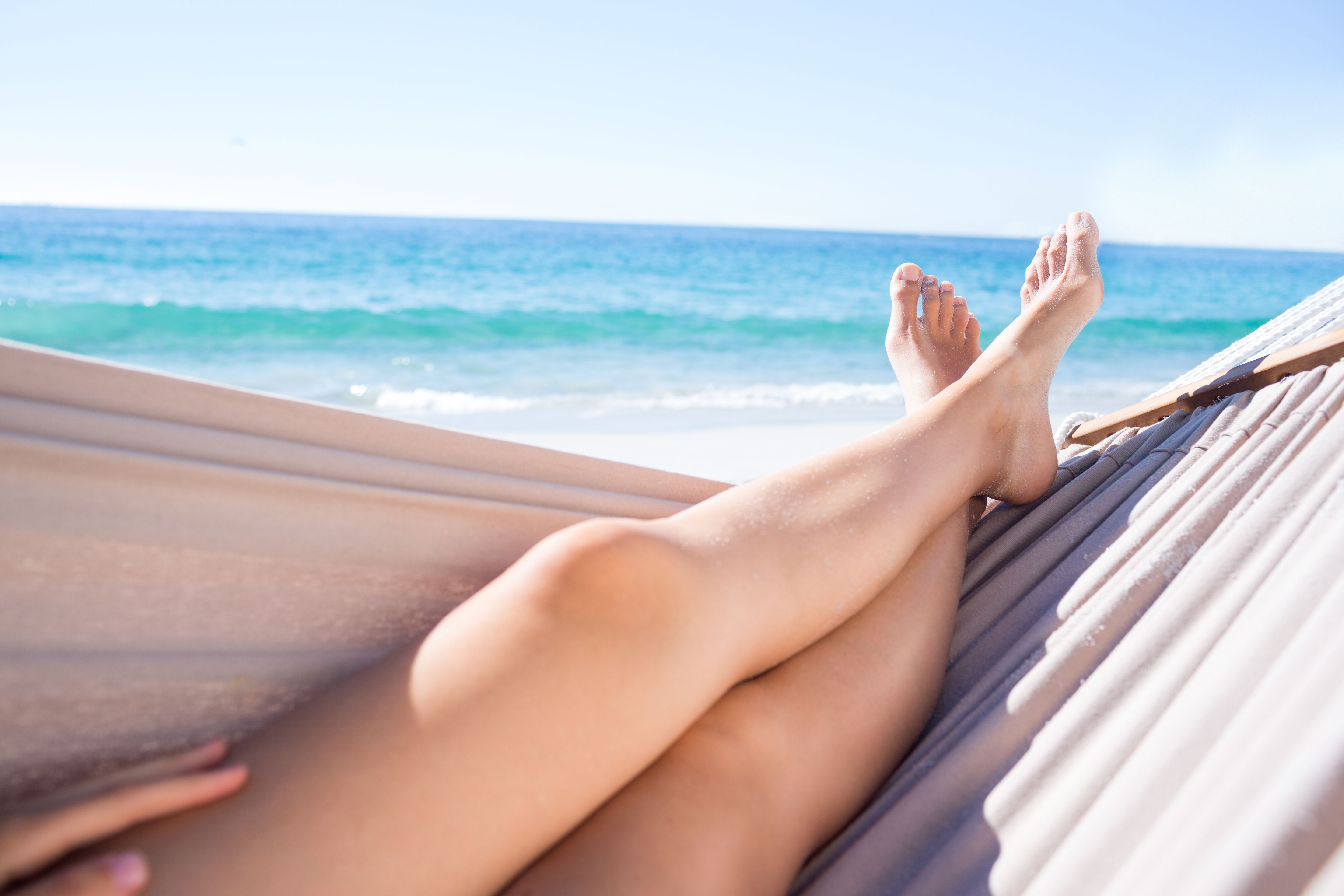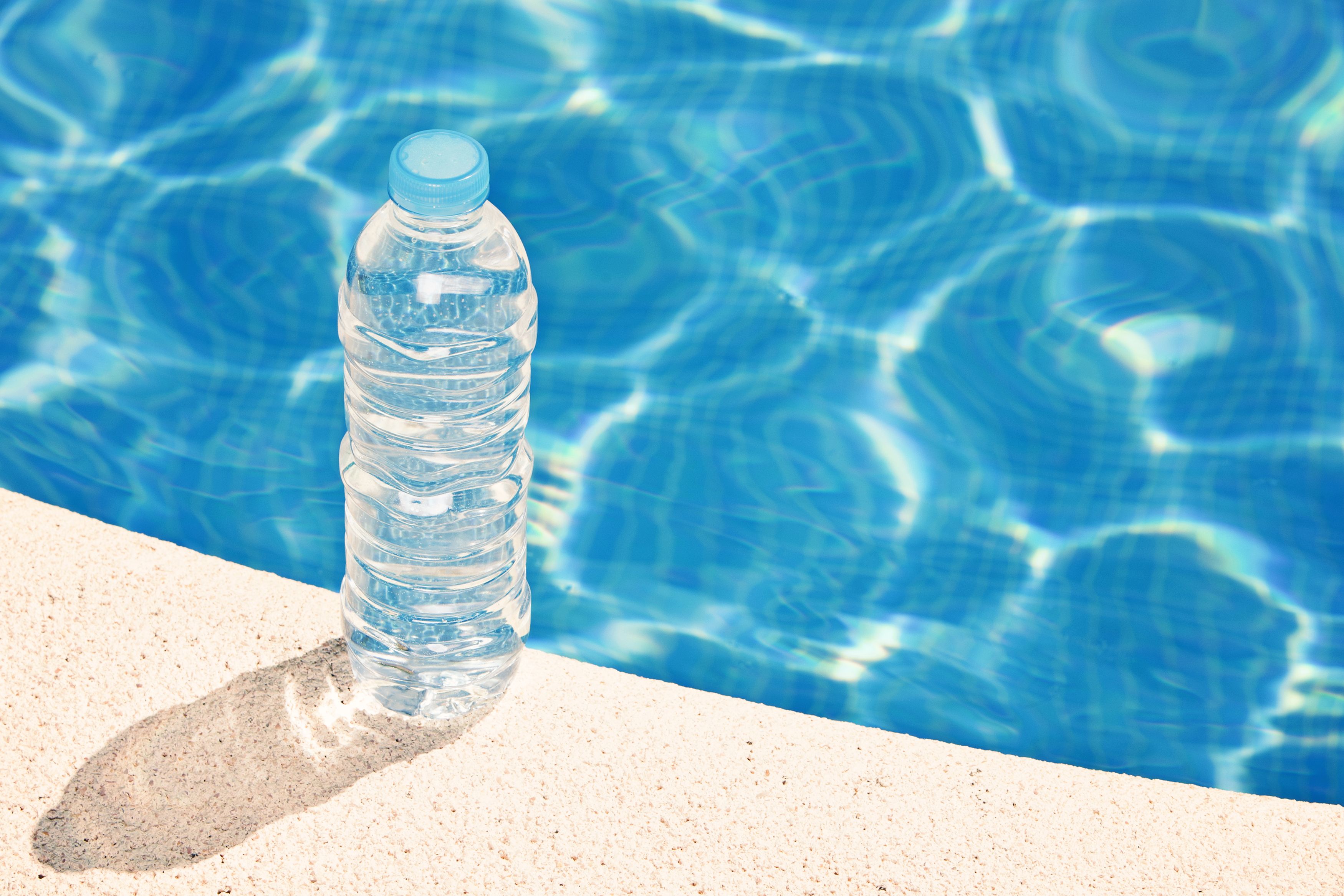How to prevent venous insufficiency during summer vacation

Summer is the time for vacations, but also for high temperatures, that may aggravate vein dilatation and increase the risk of venous insufficiency.
Hot weather and increased risk of venous insufficiency symptoms1-5
Chronic venous insufficiency occurs when your leg veins don’t allow blood to flow back up to your heart. Normally, the valves in your veins make sure that blood flows toward your heart. These valves can become weakened or damaged, hindering their ability to efficiently transport blood, particularly in the lower extremities, where veins must counteract gravitational forces. When these valves fail to function optimally, blood accumulates in the veins. This can result in:
- Pain that may intensify after prolonged inactivity or at the end of the day
- Throbbing, or a feeling of heaviness in the legs
- Swelling in the lower extremities
- Cramps
- Skin changes like discoloration
- Varicose veins
- Leg ulcers
Hot weather exacerbates this condition by causing veins to dilate further and expand. This process makes it even more difficult for blood to return to the heart and increases blood flow to the skin surface. The dilation of blood vessels can lead to more fluid leaking into the surrounding tissues, exacerbating symptoms or signs of venous insufficiency, such as swelling, or varicose veins.
Indeed, swelling in the legs, ankles, and feet tends to be more pronounced in summer due to several factors related to heat and the body's response to high temperatures. This happens because your body tries to cool itself with more blood flowing to the surface of the skin to dissipate heat. Caused by the accumulation of excess fluid in the tissues, swelling can then worsen, especially in warmer climates. This is known as heat edema, a common condition during hot weather. This swelling can be uncomfortable and sometimes painful, significantly affecting daily activities and overall well-being.
Moreover, too much sun exposure damages the skin, making it less elastic and affecting the veins underneath. The change to presentations of varicose veins, characterized by their dark, bulging appearance, tend then to worsen, causing more pain, vein cramps, and inflammation. The additional summer heat intensifies the distress associated with this already challenging health condition.
Tips to prevent aggravation of venous insufficiency due to hot weather
Summertime means time out in the sun and more time for fun outdoor activities and travel.1 But patients with venous insufficiency may have good reason to be apprehensive about the heat and sun, as these can cause additional damage to their veins.4 Here are some practical tips for managing your vein health during the summer:
Stay hydrated1,2
Hot weather increases sweating, leading to dehydration if fluids are not adequately replenished. The body's natural response to heat is to keep more water to prevent dehydration. This retention often comes with increased sodium levels, which can cause the body to hold onto even more water, contributing to leg swelling.
While staying hydrated is then essential, excessive fluid intake can worsen edema. It is recommended to:
- Drink plenty of water when it is hot out, especially if you are participating in outdoor activities. While water is optimal for hydration, you can mix things up with herbal teas, electrolyte drinks, or fruit-infused water.
- Avoid beverages that can dehydrate you, such as alcohol, caffeine, or sugary drinks.
- Reduce your salt intake if you plan to spend time in the heat. Too much salt can cause your body to retain water and worsen swelling. Salty foods are often readily available during pool parties, barbeques, and summer activities, so keeping track of your salt intake in these situations is essential.

Exercise2,4
Strengthening weakened vein valves can alleviate the discomfort associated with venous insufficiency. Incorporating light exercise into your daily routine helps reduce swelling and venous congestion. Evening workouts offer additional benefits by addressing congestion that accumulates during the day.
But exercise doesn’t have to expose you to excessive hot weather. Be mindful of the heat: work out early in the morning or later in the evening or choose an activity space with air conditioning to avoid overheating. For instance, taking a short walk in the evening strengthens veins while avoiding the afternoon sun. Moreover, swimming is a low-impact exercise that strengthens the legs and provides a refreshing experience in cool water on hot days. To maximize the benefits of swimming, focus on activities like walking in the shallow end or performing calf raises. These movements engage the calf muscles, promoting increased venous return and overall health.
Elevate your legs after a long day1
Raising your legs above the level of your heart can help reduce swelling in hot weather, especially if you have been active. Elevating your legs for 15 minutes daily can help reduce the swelling caused by heat edema.
Wear proper clothing and footwear1
Wearing comfortable, supportive shoes in the summer heat can help reduce pressure on your feet and ankles. Avoid high heels or tight shoes that can restrict blood flow. If you will be on your feet all day, choose footwear made from breathable materials such as mesh, which allows heat and moisture to escape.
Moreover, breathable, loose fabrics can help you stay cool during hot weather. Heavy fabrics like denim or thick knits can trap heat and increase body temperature. Tight clothing like leggings can increase your swelling. Wearing light layers can help you adjust to changing temperatures throughout the day.
Compression stockings1
Compression stockings are specially designed garments that apply gentle pressure to your legs, ankles, and feet. This pressure helps improve blood flow and reduce fluid accumulation, which can significantly alleviate the symptoms of venous insufficiency. By enhancing circulation, compression stockings help prevent fluid from leaking out of the veins and accumulating in the surrounding tissues, which reduces swelling, especially during hot weather.
Protect your veins2,4
If you currently have varicose veins, you should be sure to protect them while having fun in the sun. Simple but important measures such as wearing sunblock, using a high SPF moisturizer can help with surface damage, and keeping cool during hot weather can help prevent your vein health and appearance from worsening. To stay cool and protect your veins, avoid direct sunlight whenever possible. Opt for shaded areas, such as parks with ample tree cover, or use canopies to shield yourself from sun rays during outdoor activities.
Venoactive drugs5
Venoactive drugs or phlebotonics are a class of drugs often used to treat venous insufficiency. They can improve venous tone as well as blood circulation and can be used to improve the symptoms of venous insufficiency, such as edema in the lower legs, cramps, or swelling.